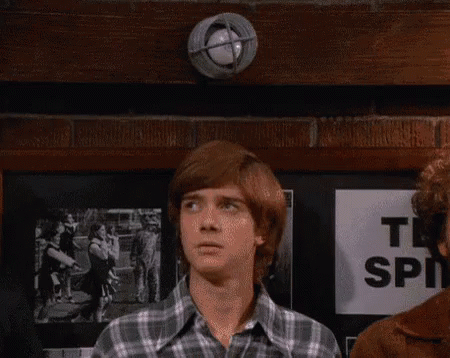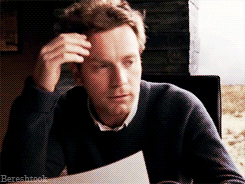The Vital Role of Script Breakdowns and How Automation Streamlines the Journey

In film production, a script breakdown is the first critical step in transforming a screenplay into a visual story. This meticulous process involves deconstructing the script to identify all the elements—characters, locations, props, and dialogue—required to bring the narrative to life. It's a complex task that ensures every aspect of the production aligns with the director's vision, laying a foundational blueprint for the entire team.

The Script Breakdown Process
Traditionally, the process begins by dividing each page of the script into eighths. This method allows production teams to estimate how much screen time each scene requires and organize the myriad details that must be coordinated. From pinpointing which actors will be needed on set to determining the specific props and costumes for each scene, the breakdown ensures that nothing is overlooked. While this has traditionally been a manual and somewhat cumbersome task, the integration of digital tools has brought significant advancements in precision and efficiency.
The script breakdown process is critical for transforming the static pages of a screenplay into a comprehensive, actionable film production plan. This detailed preparation phase involves a granular analysis of the script to pinpoint every element that will appear on screen.
Key Components of Script Breakdown:
- Characters and Cast Needs: Every character in the screenplay, from lead roles to background extras, is meticulously cataloged along with specific scene requirements. This includes tracking character arcs and ensuring continuity in appearance and behavior across various scenes.
- Costume and Wardrobe Analysis: The wardrobe requirements for each character are detailed to reflect their development throughout the film and to maintain continuity. This includes not just major costume changes but also subtle shifts that might influence the perception of character evolution.
- Props and Set Dressing: The breakdown identifies all props needed, from those central to the plot to incidental decorations that contribute to the atmosphere and setting of scenes. This meticulous cataloging ensures that every visual element contributes to the narrative’s authenticity and depth.
- Locations: Identifying and securing locations is crucial. The script breakdown process involves pinpointing suitable filming locations that align with the story’s settings, which involves logistical considerations such as travel, permissions, and the physical feasibility of shooting.
- Special Requirements: This category encompasses a broad range of needs, from stunt coordination and choreography to the management of special effects, animals, or specialized machinery. Each requirement is planned in detail to ensure safety and effectiveness during shooting.
Once these elements are mapped out, they inform the creation of an efficient filming schedule. This schedule is crafted considering factors like actor availability, location logistics, and the complexity of individual scenes. The advent of digital tools has revolutionized this process. Platforms equipped with AI capabilities, such as RivetAI, enhance this stage by automating the analysis and categorization of script elements, significantly accelerating the process and reducing the potential for errors.
The incorporation of technology also improves communication and collaboration across the production team. For example, with a platform like RivetAI, once a script is broken down, detailed information about each aspect of the production is made accessible to all departments simultaneously. This ensures that everyone from the production designer to the director of photography and the costume designer is on the same page from the outset, fostering a unified approach to the filmmaking process.
This shift from traditional, manual breakdown methods to a streamlined, technology-driven approach marks a significant evolution in the film industry. By leveraging these technological advancements, production companies not only achieve higher efficiency and precision but also empower their creative teams to focus more on the artistic and storytelling aspects of filmmaking.

Why Script Breakdowns are Essential
Effective script breakdowns are crucial for several reasons. They serve as a comprehensive guide for budgeting, clearly delineating the resources necessary for each scene, which helps prevent financial overruns. Additionally, they aid in the development of a logical and cost-effective shooting schedule, ensuring that scenes are filmed in an order that maximizes the use of locations and actors' time. Beyond scheduling and budgeting, script breakdowns are indispensable for resource management, enabling the precise allocation of everything from camera equipment to set pieces.

Role of Technology in Enhancing Script Breakdowns
In modern film production, technology plays an increasingly central role, and script breakdowns have benefited greatly from this evolution. Digital tools and software have automated the identification and cataloging of script elements, reducing the margin for error and the hours of labor previously required. These tools also enhance team collaboration, allowing for real-time updates and adjustments, which are vital in a dynamic production environment where plans can change at a moment's notice.

Challenges and Solutions in Script Breakdown
Despite the advancements, the process of breaking down a script can still be daunting due to its inherent complexity and the detailed attention it demands. The challenge lies not only in identifying all necessary elements but also in adapting to unforeseen changes that a script might undergo. Here, automation and artificial intelligence play pivotal roles by enabling quicker adaptations and ensuring that all departments are kept abreast of updates efficiently.

In practice, the impact of automated script breakdowns can be seen in numerous productions that have embraced these technologies. By reducing the time spent on administrative tasks, production teams can redirect their focus towards creative and logistical execution, ensuring that projects are not only completed on time and within budget but also reach their artistic potential.
Conclusion
The transformation of script breakdowns from a manual, tedious task to a streamlined, automated process illustrates the broader impact of technology in film production. While many platforms now offer digital breakdown solutions, RivetAI stands out by combining state-of-the-art AI with an emphasis on data quality, security and user privacy. RivetAI not only simplifies the breakdown process but does so with an eye towards protecting the intellectual property of its users, making it a leader in the field. By harnessing the power of RivetAI, filmmakers can focus more on their creative visions, secure in the knowledge that the logistical backbone of their projects is robust and reliable.
Embrace the future of film production with RivetAI. Discover how our cutting-edge technology can streamline your pre-production process, allowing you more time to focus on what truly matters—bringing your cinematic visions to life. Visit our website to learn more and schedule a demo today: